Syracuse is due to its 2,700 years of Roman and Greek history a paradise for those interested in monuments and archaeological sites. The city is known for having one of the largest Greek theatres, one of Italy’s largest Roman amphitheatres, and a historical centre located on an island. So, it’s not strange that the entire city has been listed as a World Heritage Site. When visiting Sicily, Syracuse cannot be missed. In this post you’ll find 13 things to do and see in Syracuse, so that you’ll get to have the best stay in Syracuse!
- 13 Things to do and see in Syracuse
- 1. Have a look a the ruins of the Temple of Apollo
- 2. Cathedral of Syracuse
- 3. Church of Santa Lucia alla Badia
- 4. Daydream at the fountain of Arethusa.
- 5. Castello Maniace
- 6. Stimulate your senses at Ortygia Market
- 7. Follow the footsteps of archaeologists at the Archeological park of the Neapolis
- 8. Walk through the eerie catacombs at Basilica di San Giovanni,
- 9. Visit Syracuse Museo Archeologico
- 10. Go on a day trip to Ragusa, Noto & Modica
- 11. Go on a day trip Calamosche Beach
- 12. Go on a day trip to Fontane Bianche
- 13. Go for a hike at Cavagrande del Cassible
- Map
13 Things to do and see in Syracuse
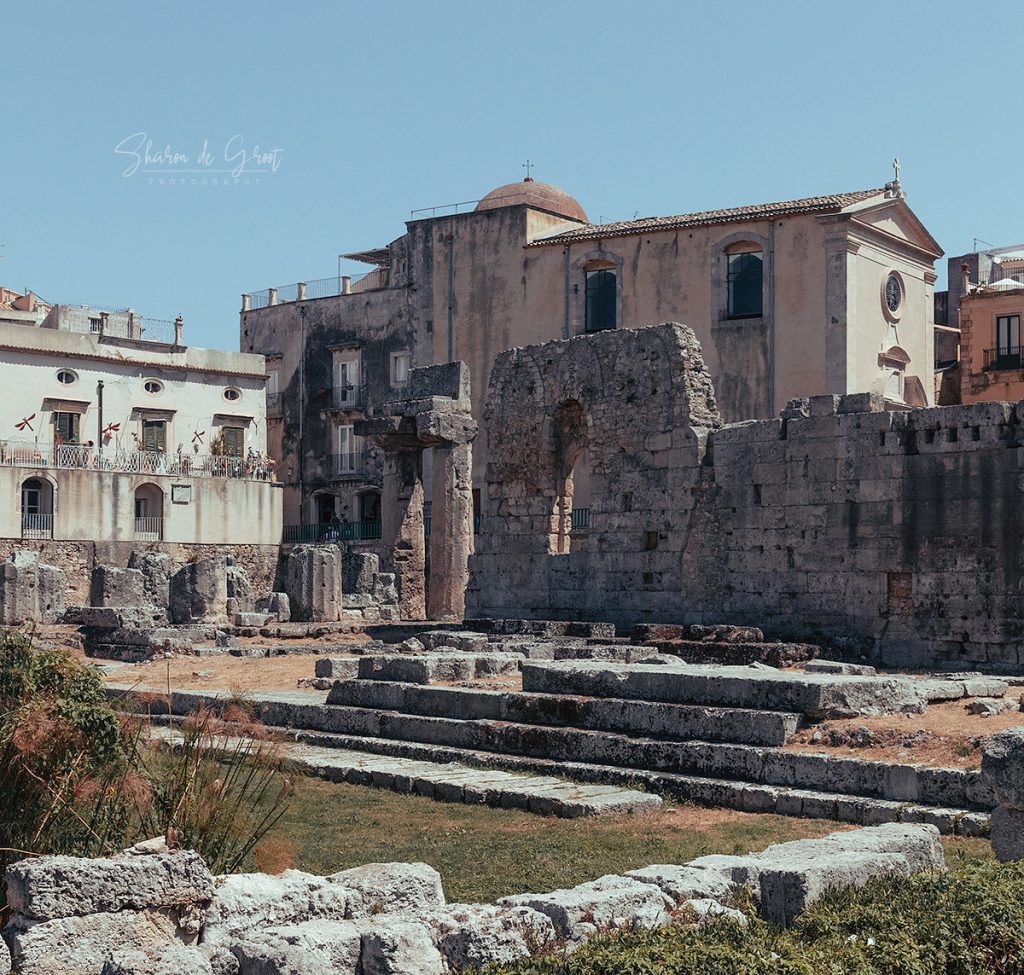
1. Have a look a the ruins of the Temple of Apollo
My absolute favourite place in Syracuse is the island Ortygia (Ortigia in Italian) which is the historical centre of Syracuse. The island is connected to the mainland by two bridges. The Temple of Apollo is one of the first sights you’ll stumble upon when visiting Ortygia Island. The temple dates back to the 6th century B.C., making it one of the most ancient Doric temples in Sicily. During its lifetime, the temple has been transformed into a Byzantine church, an Islamic mosque, a Norman church, and Spanish Barracks. Nowadays all that is left of the temple, which perfectly resembles Sicily’s past rulers, are ruins you can see for free.
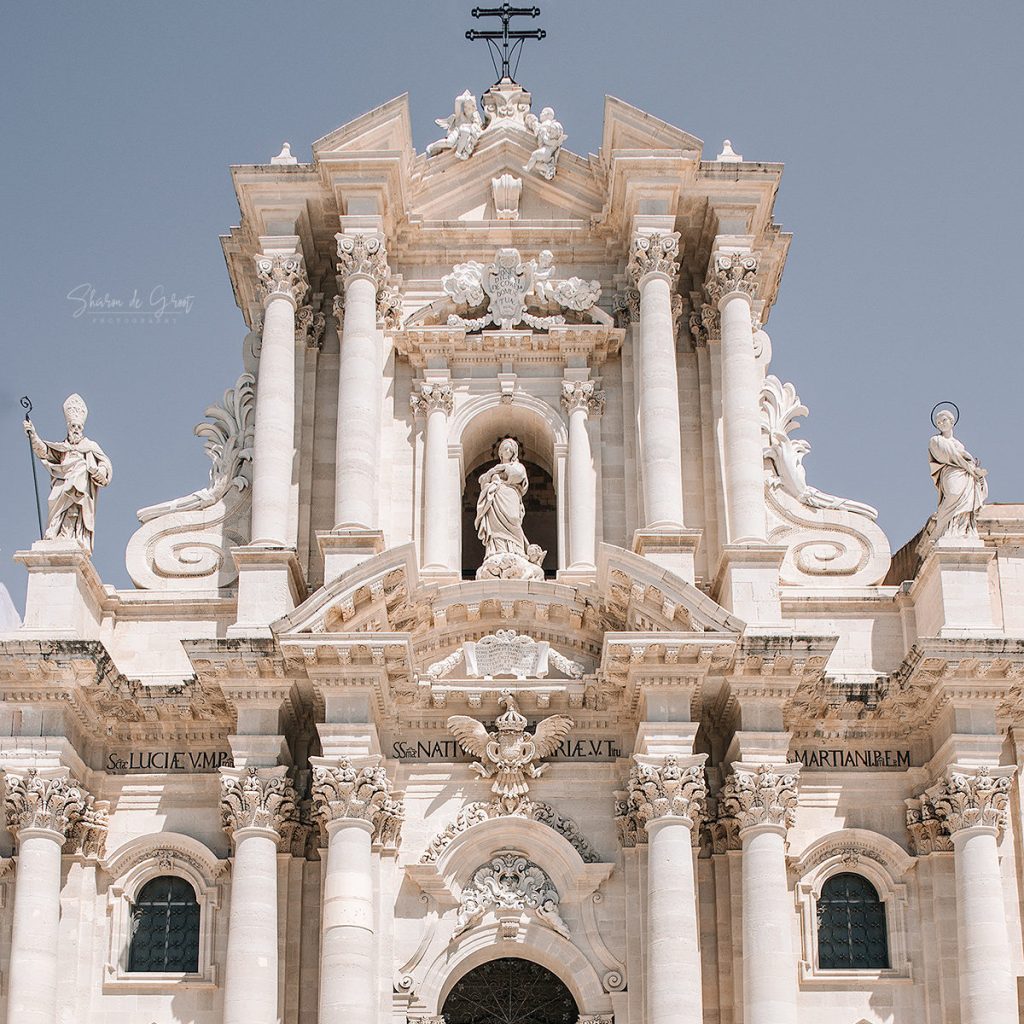

2. Cathedral of Syracuse
Also located on Ortygia island, the Cathedral of Syracuse is another extraordinary archaeological wonder. The cathedral is composed of pieces of the Temple of Athena, which originally stood in its place. Nowadays you can still see remains of the temple; the Doric columns incorporated in the walls that can be seen on the inside and outside were part of the original temple.
Similar to the Temple of Apollo, the cathedral has been transformed many times. It has once been converted to a mosque, then it got converted back to a Norman church. The roof of the nave and the mosaics in the apses are of Norman origin. Later on, in 1693, the cathedral had to be rebuilt after an earthquake. The design of the façade was done by Andrea Palma, in a more Baroque style.
The Cathedral is located in the heart of Ortygia island: Piazza del Duomo. If you’ve got the time I’d recommend visiting this square twice, once during the daytime to go inside the Cathedral and once in the evening to see it illuminated. Not to mention, there are a couple of great restaurants with a view of the cathedral. Talk about dinner with a view!
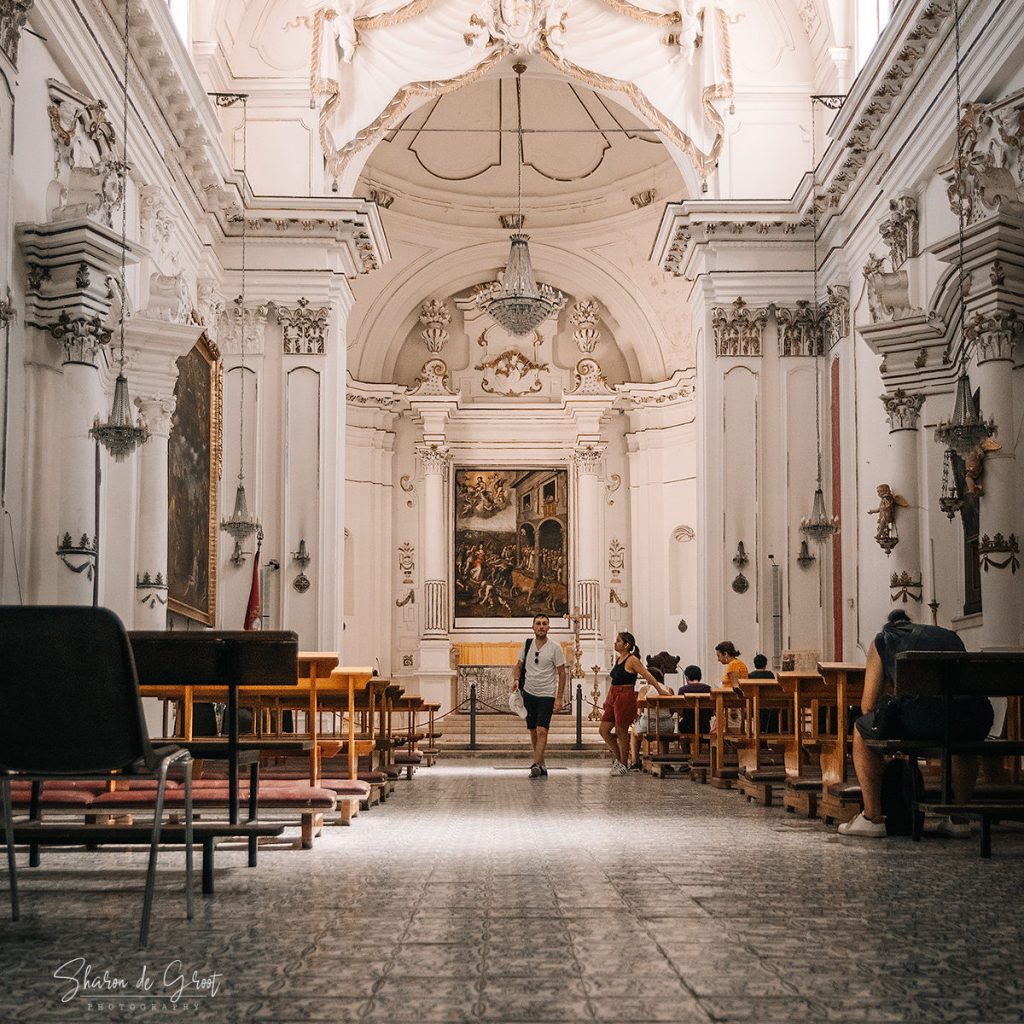
3. Church of Santa Lucia alla Badia
Located right next to the Cathedral of Syracuse is the Church of Santa Lucia alla Badia, a baroque-style church, that has been through a lot of destruction. First, in 1693, when an earthquake destroyed the church so badly that it has to be rebuilt, and later on, during the 2nd world war, it suffered even more damage. You won’t see this when visiting, though for the church has risen from the ashes like a phoenix.
4. Daydream at the fountain of Arethusa.
We remain on Ortygia island because the next sight is located there as well. The fountain of Arethusa is a natural freshwater fountain located right next to the ocean. The atmosphere is almost magical and has inspired many writers and poets over the years. Take a break in the shade of the Papiry plants whilst watching the fish and ducks swim around.
It’s not a surprise that this tranquil place has a legend. Arhusa is said to have been one of Artemis’ favourite nymphs. One day, Arthusa was bathing in a river to cool off, when the god Alpheus, who owned the pool, chased and trapped her. Arthusa called Artemis for help, who turned Arthusa into the spring that is now known as ‘the fountain of Arethusa’ and ‘Artehusa’s spring’.
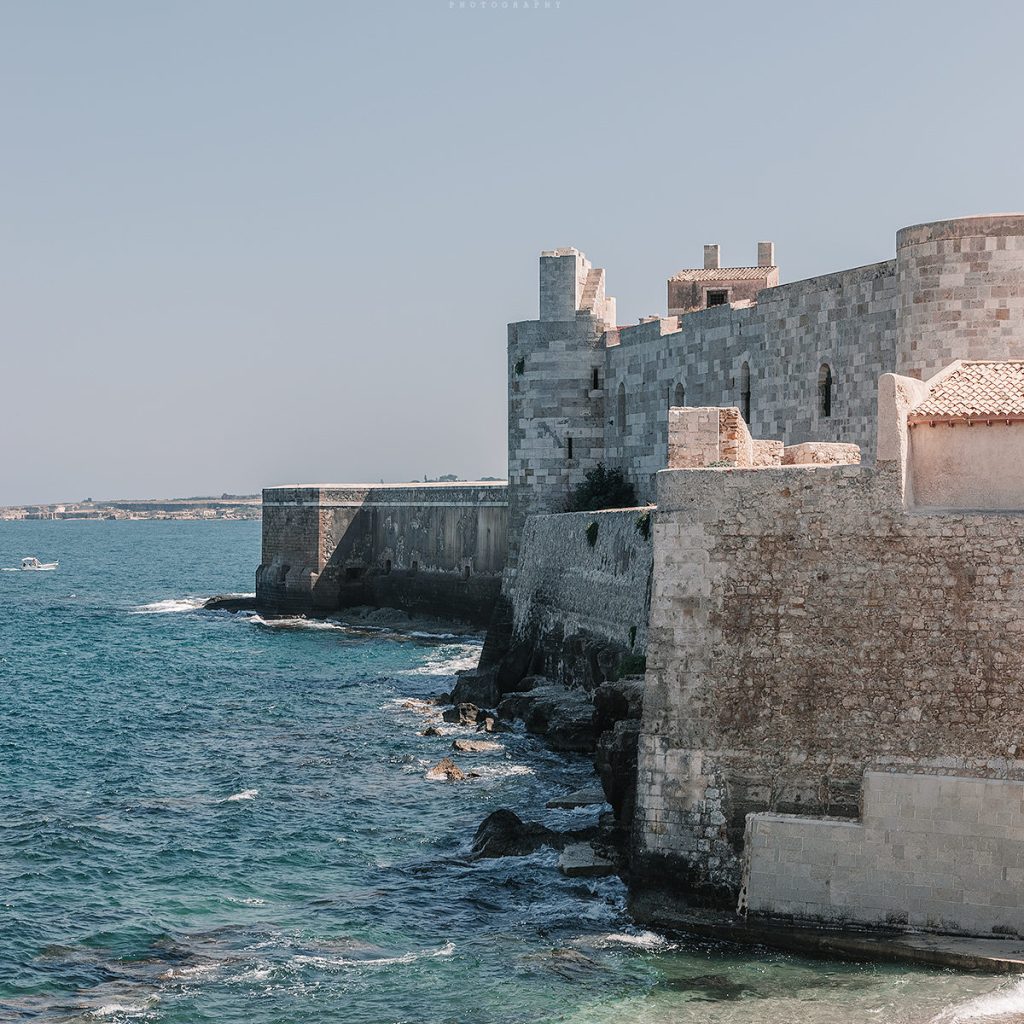
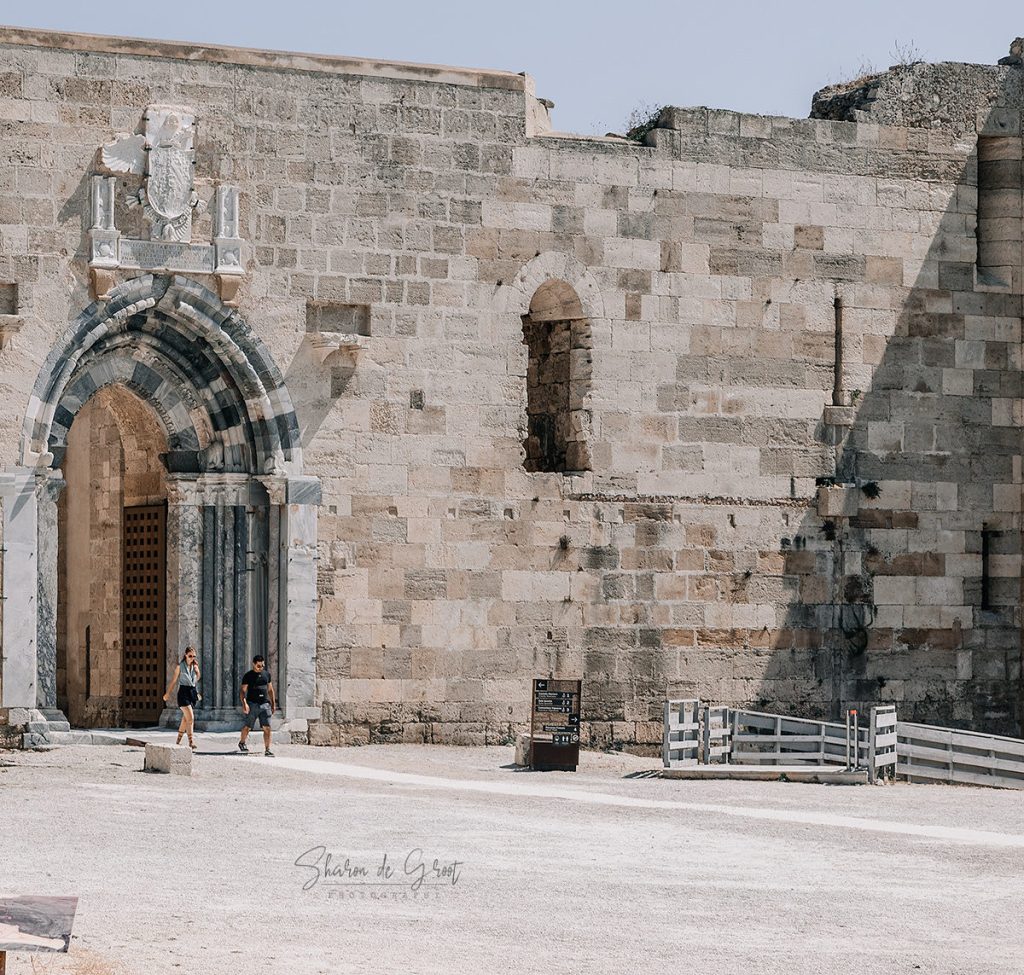
5. Castello Maniace
I told you Ortygia has a lot to offer for this castle is located at the most southern point of the island. The location was deemed perfect for protecting the harbour of Syracuse, which it did together with the now disappeared Marchetto castle. Eventually, it became a royal residence, but that is not the only thing it has been because in 1302 it became the seat of the Royal Chamber, then in the last half of the 15th century it became a prison only to be turned into a fort (with actual walls around it) in the 16th century.
These changes over the years are still visible, for example, the gorgeous vaulted arch ceiling that dates back to the royal residence. You can enter the Castle and learn more about its history for €8,00. I recommend booking an English audio tour on aditusculture.com, because most of the information signs are in Italian.
6. Stimulate your senses at Ortygia Market
Okay, I swear this is the last sight that is on Ortygia island! Every morning from Monday to Saturday there is a market at Vicolo Bagnara and Via del Mercato. Do not miss out on this market if you want to experience authentic Italian life. At the Ortygia market, vendors sell all kinds of goods: fresh fruit, fish, spices, hats, bags, and way more! It is an incredible experience to walk around smelling the fresh fish and hear the vendors shout their prices.
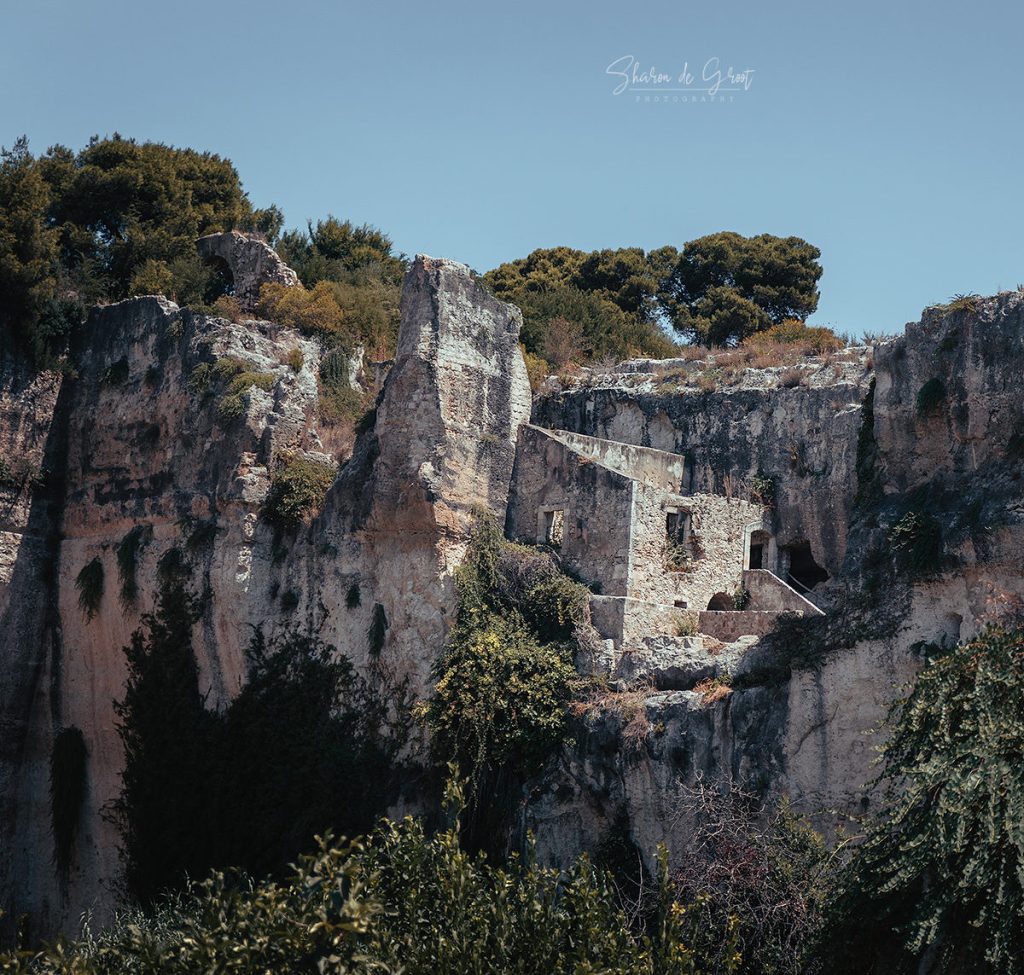
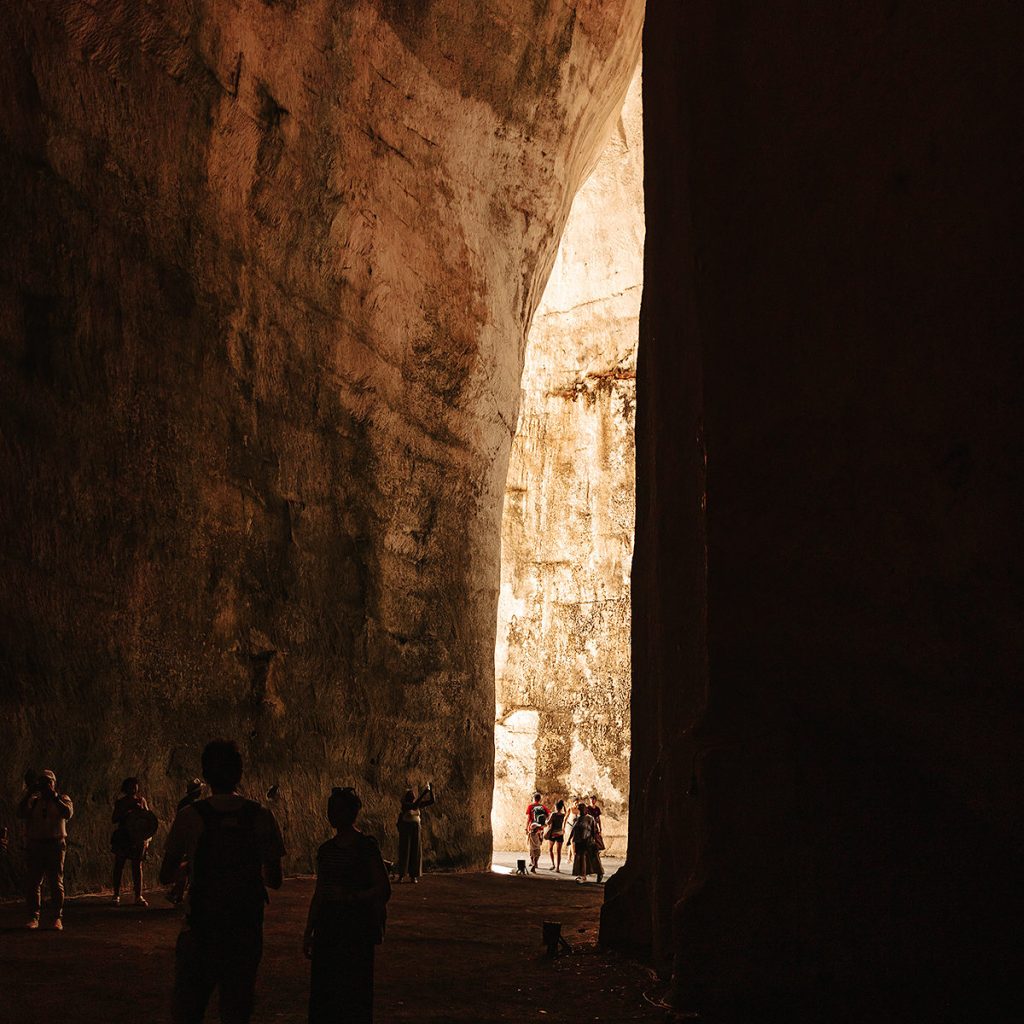
7. Follow the footsteps of archaeologists at the Archeological park of the Neapolis
The archaeological park of Syracuse is the place to be with its 35 hectares of ancient ruins. This park does not have 1, but several not to be missed highlights making it one of Syracuse’s best attractions. So what is there to see? Over at the Archeological park, you will find the largest Greek theatre in Sicily. The theatre has a diameter of 138 metres, and it is in a pretty good state. Nowadays they still perform shows there which is both an advantage and a disadvantage. If you want to see the ancient Greek theatre in its original state, make sure to visit when there isn’t a show because they will put wooden seats and scaffolding over it. I have heard that the shows are quite impressive though! Unfortunately, we had no time to visit one.
Don’t throw your ticket away, you will need it to acces the Roman Amphit theatre later on the route.
Furthermore, the park also has a Roman Amphit theatre. It is not as well preserved as the Greek theatre, but still pretty impressive due to its size: 140m by 119m. There aren’t any shows at this theatre meaning you won’t have to worry about it being covered in wood.
But there is more! The park also has the Ear of Dionysius , which is a limestone cave in which people’s voices echo up to 16 times. It used to function as a prison and the legend is that Dionysius would eavesdrop on the whispering prisoners. Furthermore, there is Grotta dei Cordari, which is another limestone cave, the Altar of Hieron, making it worth a visit.
If you arrive from the Syracuse, go left, not right. At the right there are some shops, but the ticket booth and the entrance is at the left side of the road.
It has gotten more expensive since my last visit. Entrance is €13,-, but there is a discount for those between 18-25. If you’re not that much into history, I would skip this because the price is a bit high for what it offers. It is a nice walk in the park, don’t get me wrong and you’ll be able to roam around for 1 to 2 hours, but there are cheaper options such as the Roman amphitheatre in Taormina, which is better preserved too.
-> Check things to see and do in Taormina.
8. Walk through the eerie catacombs at Basilica di San Giovanni,
Located near the Archeological park of Neapolis and underneath the Basilica di San Giovanni, is an extensive network of catacombs. There are said to be about 20.000 tombs down there. Head down the staircase to enter a world of silence and listen to the fascinating story of the guide. Every 30 minutes a tour will start in both Italian and English. Entrance is €10 or €7 for those under 15 and above 65. This truly is an intriguing experience!
9. Visit Syracuse Museo Archeologico
As the name suggests, this is an archaeological museum, which contains more than 18.000 prehistoric, Roman and Greek artefacts. The museum consists of 4 sections: Section A is the prehistoric section, Section B is the Greek period, Section C is the colonies of Syracuse and Section D is the Roman period. Allow yourself a few hours to roam around, discovering more about the history of Sicily. Entrance is €10, there is a €5 discount for EU citizens between 18-25.
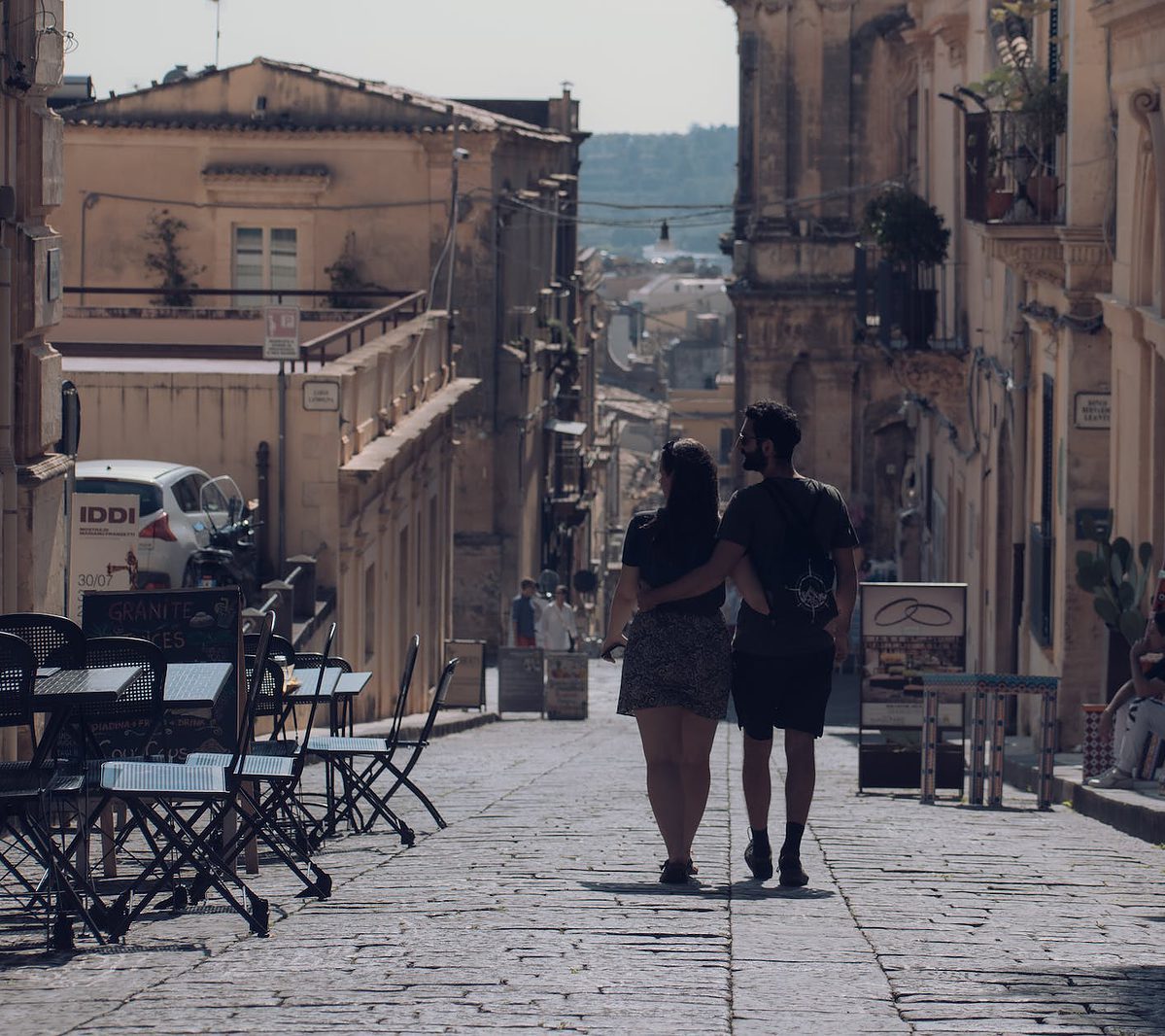
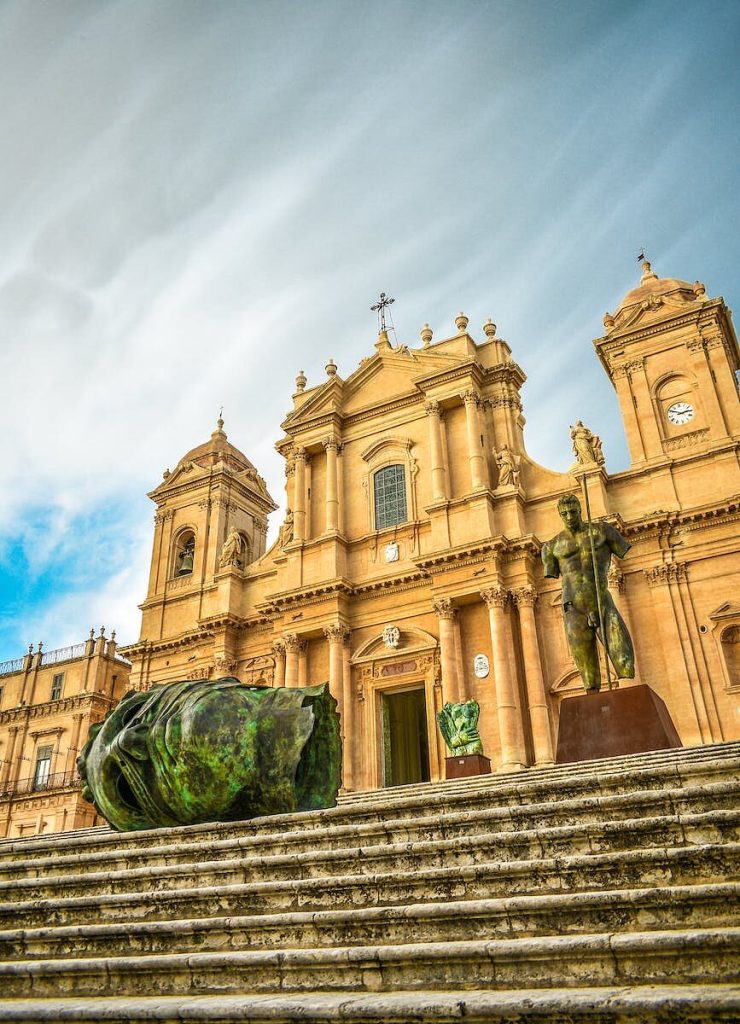
10. Go on a day trip to Ragusa, Noto & Modica
Ragusa, Noto and Modica are Sicily’s most beautiful Baroque towns that are each worth a visit. The three towns are located near each other, the closest one to Syracuse is Noto which only takes a 35-minute drive.
Syracuse to Noto: 35 minutes
Noto to Modica: 46 minutes
Modica to Ragusa: 24 minutes
All three towns are on the UNESCO World Heritage list and can be considered an open-air museum. Visit Ragusa’s Duomo di Sanh Giorgi; Sicily’s oldest chocolate factory in Modica, and the main street (Corso Vittorio Emanuele) in Noto, and these are just a couple of examples of what to do in these architectural paradise towns!
11. Go on a day trip Calamosche Beach
All that sightseeing is pretty tiring so if you’re looking for a relaxing day at the beach I’d recommend going to Calamosche beach. The golden sand beach is located near Noto and is due to its clear waters considered one of Sicily’s prettiest beaches. The beach is located in a nature reserve which is why it is never too crowded. The walk from the parking lot to the beach takes 20 minutes. Parking costs €5. For an additional €1, you get to use the showers upon return.
12. Go on a day trip to Fontane Bianche
Another beach worth visiting is Fontane Biache, which is only a 15-minute drive from Syracuse or 10 minutes by train. Fontane Biache is a white sandy beach with azure blue waters. The beach is not very broad but is over 1 kilometre long. There are multiple parking lots near the beach, but this does make it a bit more crowded than Calamosche Beach. It is, however, not really discovered by tourists yet. Afterwards, it is possible to go for dinner in Fontane Bianche itself.
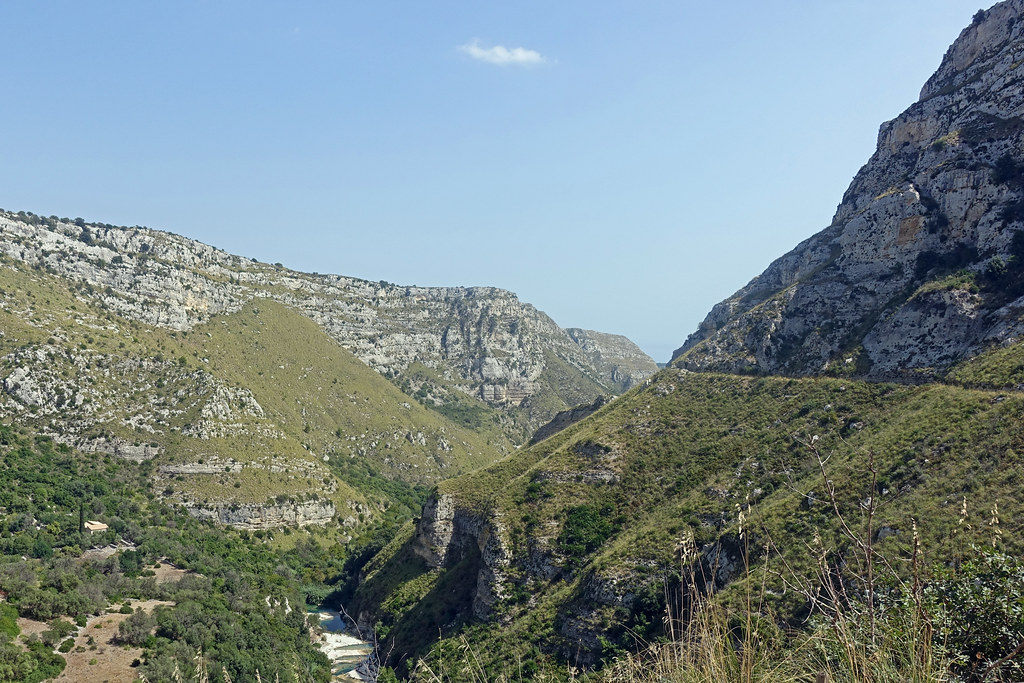
13. Go for a hike at Cavagrande del Cassible
Cavagrande is located in a nature reserve. There are multiple hikes in this area, but the most well-known is the one down to the natural pools where you can go for a swim. You get to choose which side to descend; the right side with more steep bits; or the left side with more stairs. It takes about 30 minutes to go down and it’s very doable. Again some bits are a bit steep, but the stunning scenery makes up for it.
Once you reach the bottom it’s like you have entered paradise: tiny waterfalls, flowers, and emerald green water to cool down in. Make sure to bring enough water and food because you cannot buy any in the reserve and do save some for the way back up!
Tip: Try to arrive early so that you don’t have to walk during the hottest part of the day and so that you can pick a spot in the shade
Map
These were the 13 things to see and do in Syracuse. I hope this post has helped you get inspired! Have you ever been to Syracuse? If so, what was your favourite thing to do there? Staying longer in Sicily? Check out my Palermo, Taormina, and Catania blog post too for some inspiration!
Love,
Sharon
Subscribe to our newsletter!

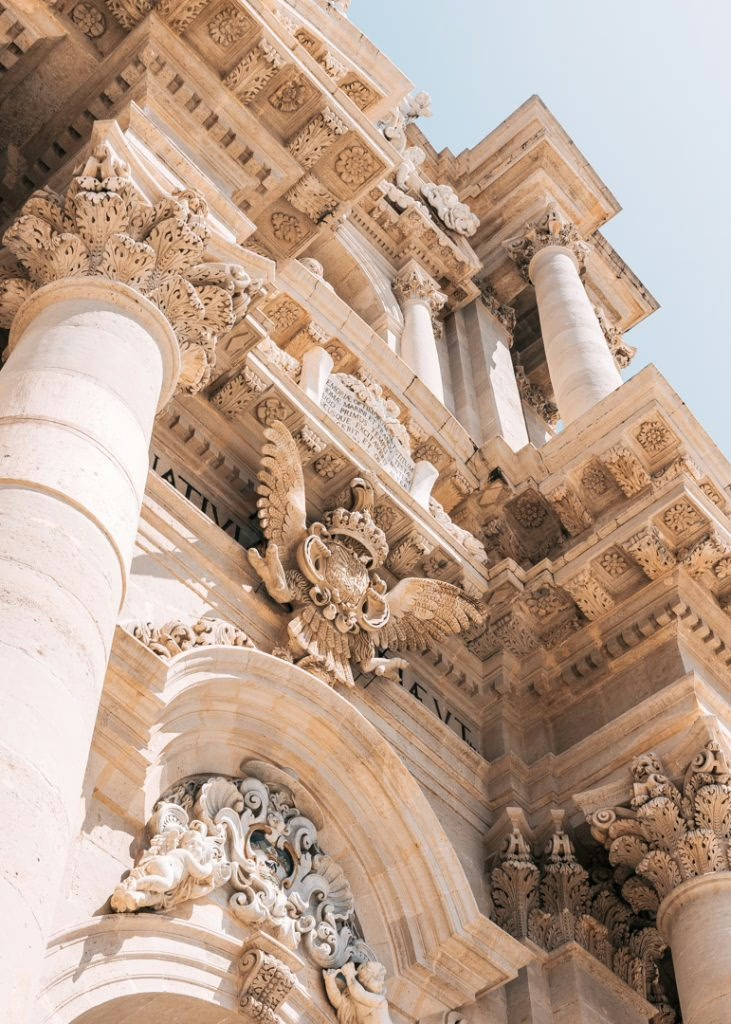
Leave a Reply